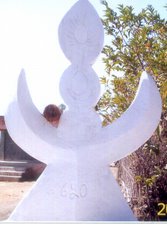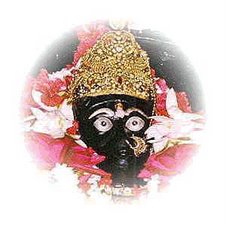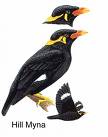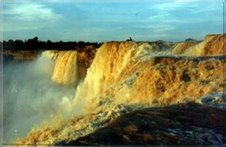


Sri Lankan state crackdown on Left Wing activists and Independent Media...
The Sri Lankan state under President Mahindra Rajapakse is trying to destroy the Sri Lankan working class movement - the only movement that has the capability of bringing peace to Sri Lanka.
As the war against the Liberation Tigers of Tamil Elam (LTTE) has intensified, Rajapakse has reintroduced the notorious ‘Prevention and Prohibition of Terrorist Activities’ bill – a bill that allows for the indefinite detention of suspects without trial.
President Rajapakse and the army chief Lieutenant General Sarath Fonseka spoke to the media; the media were warned not to criticize the war as it will effect the morale of the of the army – there is a de facto censorship in the Sri Lankan media about the war. The new bill aims at silencing all those who think differently to Rajapakse, and scaring and browbeating the Left. These are the ‘suspects’ of the ‘Prevention and Prohibition of Terrorist Activities’ bill: journalists, Independent media activists, trade unionists, Left wing activists and anyone else who does not believe that Rajapakse’s way can bring peace to Sri Lanka.
This new law has allowed the Sri Lankan state to harass and intimidate the Independent media; there have been killings, kidnappings, and death threats. These are aimed at identifying anyone who questions Rajapakse’s policies as accomplices of the LTTE ‘terrorists’. To anybody who follows the international news, this kind of ‘terrorism’ bill – intimidation, detention without trial etc – will sound familiar. There is a family resemblance between this bill and similar legislation that has been passed in the ‘freedom loving’ countries of the West.
There is little doubt that these attacks and abductions on journalists and Left wing activists is being carried out by the security and army intelligence services, and chauvinist paramilitary thugs working with the state. Here are some incidents:
* Subramaniyam Sugeedharajan, a correspondent for the Tamil daily Sudar Oli in Trincomalee, was killed in January last year. He was murdered a day after he wrote an article about the attacks by paramilitary groups linked to the military in the Eastern District.
* On the evening of May 2, a gang of thugs armed with T-56 automatic rifles stormed the Uthayan office in Jaffna and shot dead the marketing manager, Bastian George Sagayathas, and circulation supervisor, S. Ranjith. Two other employees were injured in the attack. Several weeks later, the Uthayan newspaper distributor was shot dead.
* Sampath Lakmal, a correspondent for Sathdina, was abducted on his way from home in the Colombo suburbs of Boralasgamuwa on June 30. His body was found the next day in Dehiwala. He was shot in the head. Police questioned an intelligence officer and a Sri Lankan army soldier about the murder. They were released.
* Last August, a senior news programmer with Sooriyan FM, Nadarajah Kuruparan, was kidnapped. His abductors released him 24 hours later; they warned him to halt a program that exposed the abuse of the country’s Tamil minority.
* On August 21 Sinnathamby Sivamaharajah, editor and the managing director of the Tamil-language daily Namathu Eelanadu (Our Eelam Nation) was shot dead by gunmen at his home at Tellippalai, 15 kilometres from Jaffna.
* On November 23, Munusamy Parameswari, a journalist with Mawbima, was arrested. To date she has been detained by the Criminal Investigation Department (CID) without charge. According to the Free Media Movement (FMM), the CID officials have denied access to her by journalists. She was presented before a court on January 23 and her detention was extended for another 90 days. She told the court that she had been threatened by Special Task Force (STF) officers and told to stop journalism. Parameswari has now filed a fundamental rights case against her arrest and detention.
* Last month Kumaravel Gajan, a proofreader for the Tamil newspaper Thinakkural, was arrested in Colombo. He is still being detained at the Boossa detention camp in the southern district of Galle. The newspaper’s management has tried without success to get him released.
* On January 9, a group of Sri Lankan army personnel stormed the offices of Thinakkural, Uthayan and Valampuri newspapers in Jaffna and warned staff not to publish reports by the Jaffna University Student Union. Students in Jaffna have repeatedly protested against the abduction of young people.
* On January 15, K.C. Saranga, a programmer for Derana TV, was severely beaten by a mob in the Colombo suburb of Dehiwela. His video footage relating to a recent operation by STF commandos in Eastern Province was seized in the course of the attack.
* Three journalists have fled the country after receiving death threats. They are Anuruddha Lokuhapuarachchi, a Reuter’s photographer and journalist; Rohitha Bhasana Abeywardana, a freelance reporter, and S. Rajkumar, president of the Sri Lanka Tamil Media Alliance and the Colombo news manager of the UK-based Theepam TV.
* The Karuna group, an armed militia led by V. Muralitharan or Karuna who split from the LTTE in 2004, has banned the distribution of the Colombo-based Tamil newspapers Veerakerari and Thinakkural in the eastern district of Batticaloa. Karuna’s outfit works with the Sri Lankan military.
* On the 5th of February 2007, the Sri Lankan army intelligence service kidnapped Mr. Dallas Senaviratna, Mr. Nihal Serasinghe, and Mr. Sisira Kumara. Mr Dallas Senaviratna and Mr Nihal Serasinghe were abducted at work; Mr Sisira Kumara was abducted at home. Mr. Senaviratna and Mr. Sisira are Trade Union activists; Mr.Serasinghe is the owner of a typesetting shop and is a Left wing activist. There was no warning; they were not read their rights, there was no trial; they were simply taken away. A ‘confession’ was forced; they were forced to confess their involvement with the recent bombings in the south of Sri Lanka; a confession without a trial…
There is a great deal of official corruption in Sri Lanka; the big media, the big politicians, and the big business are on the same side and always support each other. There is a system of political oligarchy, for example, three of Rajapakse’s brothers are also in the government, one is the defense secretary while another is special advisor and another is a cabinet minister. There is growing poverty and anger; anger at the war, at the corruption of the politicians, at the family oligarchies (the Rajapakse are the successors of Bandaranayake and Senanayake families) and at the lack of any progress after so long. The current regime led by Rajapakse and his fellow travellers the JHU, the JVP, and many UNP heavyweights have no answers whatsoever – they are a part of the problem.
Over 200 journalists and trade unionists demonstrated at the Fort Railway Station in central Colombo last Tuesday to condemn the growing harassment and intimidation of the media and Left wing activists. Many people did not take part because they fear for their safety, and that of their families.
We ask for international solidarity, for all those concerned to organise protests outside the Sri Lankan embassy and to distribute this short article to anybody who is concerned. The reaction of the Rajapakse regime and its fellow travellers are typical of many ‘third world’ regimes. This intimidation is supposed to show the strength of their regime; but it actually shows its weakness. This kind of legislation and these kind of actions have made it increasingly clear to many people in Sri Lanka and all over the world that mainstream politics is bankrupt.
12 Feb. 07 Colombo
World People’s Resistance Movement (WPRM) – Sri Lanka. wprm_sl@hushmail.com
www.wprm.org







No comments:
Post a Comment